
North city gate to Old Town Trogir. (912k)
From the Trogir entry in Wikipedia:
In the 3rd century BCE, Tragurion was founded as a colony by Ancient Greek colonists on the Illyrian coast from the island of Vis, and it developed into a major port until the Roman period. The name comes from the Greek "tragos" (male goat). The name might also derive from the Illyrian word "Tregur" (Three Stones).
During the migration of Croats the citizens of the destroyed Salona escaped to Trogir. Initially the Roman Tragurium was one of the Dalmatian City-States. From the 9th century on, Trogir paid tribute to Croatian rulers and to the Byzantine empire. The diocese of Trogir was established in the 11th century (abolished in 1828; it is now part of the Roman Catholic Archdiocese of Split-Makarska and has temporarily been a Latin titular bishopric) and in 1107 it was chartered by the king of Hungary, Croatia and Dalmatia Coloman, gaining thus its autonomy as a town.
In the year 1000 the Republic of Venice received submission from the Tragurium inhabitants and the city started since then to have commerce with the Italian peninsula enjoying cultural and economic improvements. However, in 1105 it acknowledged the supremacy of Hungary, while retaining its municipal freedom, and received a charter in 1108.
In 1123 Trogir was conquered and almost completely demolished by the Saracens. However, Trogir recovered in a short period to experience powerful economic prosperity in the 12th and the 13th centuries, with some autonomy under Venetian leadership. In 1242 King Béla IV of Hungary found refuge there as he fled the Mongols, who were unable to storm the island city. In the 13th and the 14th centuries, members of the Šubić family were most frequently elected dukes by the citizens of Trogir; Mladen III (1348), according to the inscription on the sepulchral slab in the Cathedral of Trogir called "the shield of the Croats", was one of the most prominent Šubićs. In Dalmatian, the city was known as Tragur.
After the War of Chioggia between Genoa and Venice, on 14 March 1381 Chioggia concluded an alliance with Zadar and Trogir against Venice, and finally Chioggia became better protected by Venice in 1412, because the newly (21 July 1412) conquered Šibenik, called Sebenico by the Venetian Republic, became the seat of the main customs office and the seat of the salt consumers office with a monopoly on the salt trade in Chioggia and on the whole Adriatic Sea.
In 1420 the period of a long-term Venetian rule began and lasted nearly four centuries, when Trau (as the city was called by the Venetians) was one of the best cities in the Balkans with a rich economy and plenty of Renaissance works of art and architecture. In about 1650 a manuscript of the ancient Roman author Petronius' Satyricon was discovered at Trogir which contained the Cena Trimalchionis ("Trimalchio's Dinner"). This is the longest surviving portion of the Satyricon and a major discovery for Roman literature.
On the fall of Venice in 1797, Trogir became a part of the Habsburg Empire, which ruled over the city until 1918, with the exception of Napoleon Bonaparte's French rule from 1806 to 1814 (when the city was part of the Napoleonic Kingdom of Italy and Illyrian Provinces).
After World War I, Trogir, together with most parts of Dalmatia, became a part of the State of Slovenes, Croats and Serbs and subsequently the Kingdom of Yugoslavia. During this period Dalmatian Italians, who until 1918 were present in the city left for Italy. In 1939 it became a part of Banovina of Croatia. During World War II, Trogir was annexed by Italy and was part of the Italian Governorate of Dalmatia from 1941 to 1943. After a short period of partisan rule it became part of the Independent State of Croatia under German military supervision from 1943 to 1944. Subsequently Tito's Partisans liberated it for second time in 1944. After that it belonged to the second Yugoslavia, and from 1991 to Croatia.
The Historic City of Trogir is a UNESCO World Heritage Site.
All pictures are © Dr. Günther Eichhorn, unless otherwise noted.


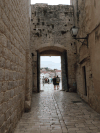
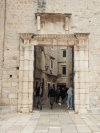
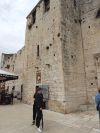
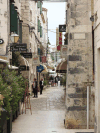
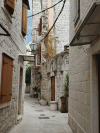
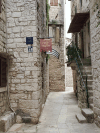



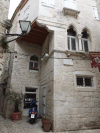


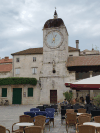

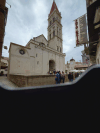
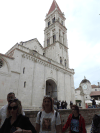
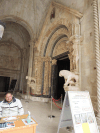
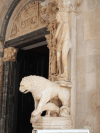
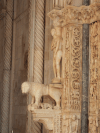


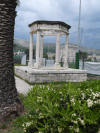


This page contains 26 pictures

Main page for Hrvatska (Croatia)
Page last updated on Sun Jun 12 15:52:52 2022 (Mountain Standard Time)
Page last updated on Thu Apr 25 23:36:43 2024 (Mountain Standard Time)